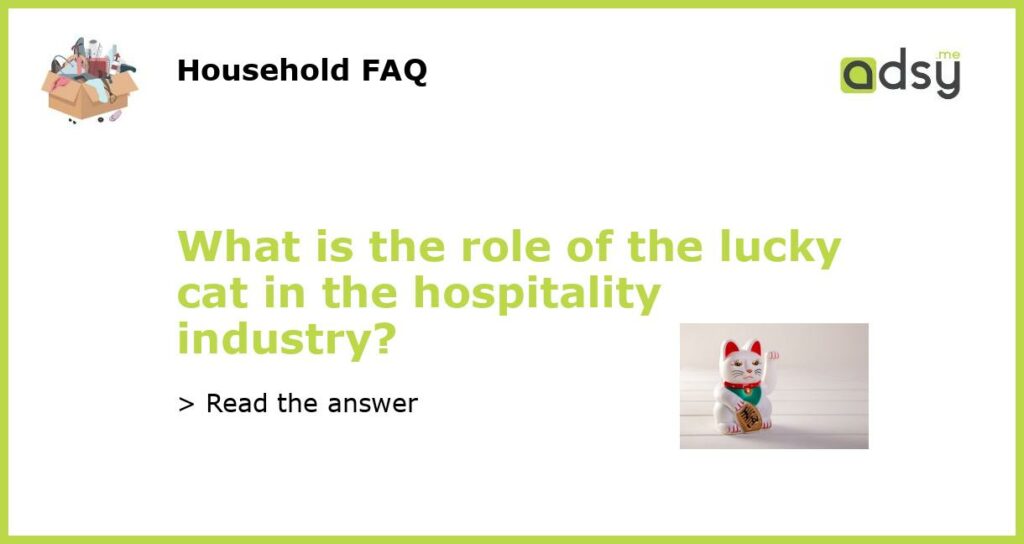The Lucky Cat: A Symbol of Fortune and Hospitality
The Japanese lucky cat, also known as Maneki Neko, has become a popular symbol of good fortune in many Asian countries. Its raised paw is believed to beckon good luck, wealth, and prosperity. In recent years, the lucky cat has also made its way into the hospitality industry, serving as a charming and welcoming emblem for hotels, restaurants, and other establishments.
The Appeal of the Lucky Cat in the Hospitality Industry
The lucky cat’s friendly appearance and auspicious connotations make it an ideal symbol for businesses aiming to create a welcoming and hospitable atmosphere. Its presence on the premises can help create a positive impression on guests and visitors. Additionally, the lucky cat’s association with good fortune aligns well with the goals of businesses wishing to offer an enjoyable and memorable guest experience.
The Use of the Lucky Cat in Marketing and Branding
Many hotels and restaurants have incorporated the lucky cat into their branding and marketing materials. The lucky cat’s image can be found on signage, advertisements, and even hotel keycards. Its use in promotional materials helps to create a memorable brand identity while also highlighting the establishment’s commitment to customer satisfaction.
How the Lucky Cat is Incorporated into Hospitality Practices
In addition to its use in marketing and branding, the lucky cat is also used in various hospitality practices. Some hotels and restaurants may place a lucky cat statue at the front desk or lobby to welcome guests. Others may give lucky cat figurines as gifts to visitors, either as a gesture of goodwill or to commemorate special occasions. Overall, the presence of the lucky cat can help create a warm and inviting atmosphere for guests.
The Future of the Lucky Cat in the Hospitality Industry
The lucky cat’s enduring popularity and positive associations with good fortune and hospitality suggest that its use in the hospitality industry is likely to continue for many years to come. As consumers continue to seek out unique and memorable experiences, the lucky cat’s appeal as a symbol of hospitality and prosperity is likely to only grow stronger.






